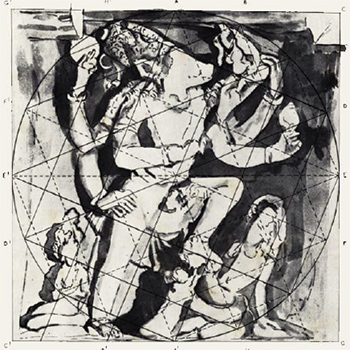Design, as a process of originating and developing a plan for a product, a structure, or a system, has close associations with art, architecture, and technology. Research is an essential part of the activity of problem solving; thus, it is an intrinsic aspect of design practice. However, ‘research’ as a knowledge-based activity is still in the pre-paradigmatic phase with respect to the practise of graphic design. The emergence of the research area presented here was triggered by an exposure to the grids (time-division) discovered in ancient Indian stone reliefs and sculptures by Boner (1962). The aim of this research is to understand the state of the art of graphic design processes involving grids and to represent the knowledge gained in a theoretical framework for further applications.
The topic of interest here is the transfer of syntactic knowledge across distant domains of design, and the focus is on the grid, a well-known tool in design. The issue of the need to develop a systematic method to transfer grids across domains originated from the need to transfer knowledge from Indian art practise to contemporary design practice. The importance of cultural and contextual knowledge has been greatly emphasised in literature, but enough attention has never been given to the transfer of procedural knowledge between traditional art and craft practises and modern design practices. By focusing on the grids, this work aims at developing a method to transfer procedural and structural knowledge across the design domains. Analogy plays a very important role in design cognition. Design researchers have developed analogy-based design support, which has proved useful (Goel, 1997) for transferring structural knowledge.
The methodological framework used for this research is based on a research methodology that was proposed by Blessing and Chakrabarti (2009). According to the types of research proposed by DRM, this work fits in Type 5, where the aim is to develop support but the level of understanding of the existing situation is insufficient for the support's development. The salient steps in this research are: comprehending the research problem; understanding grids in graphic design; developing knowledge representations of grids; formulating a method for transferring grids; and evaluating the proposed method of grid transfer.
